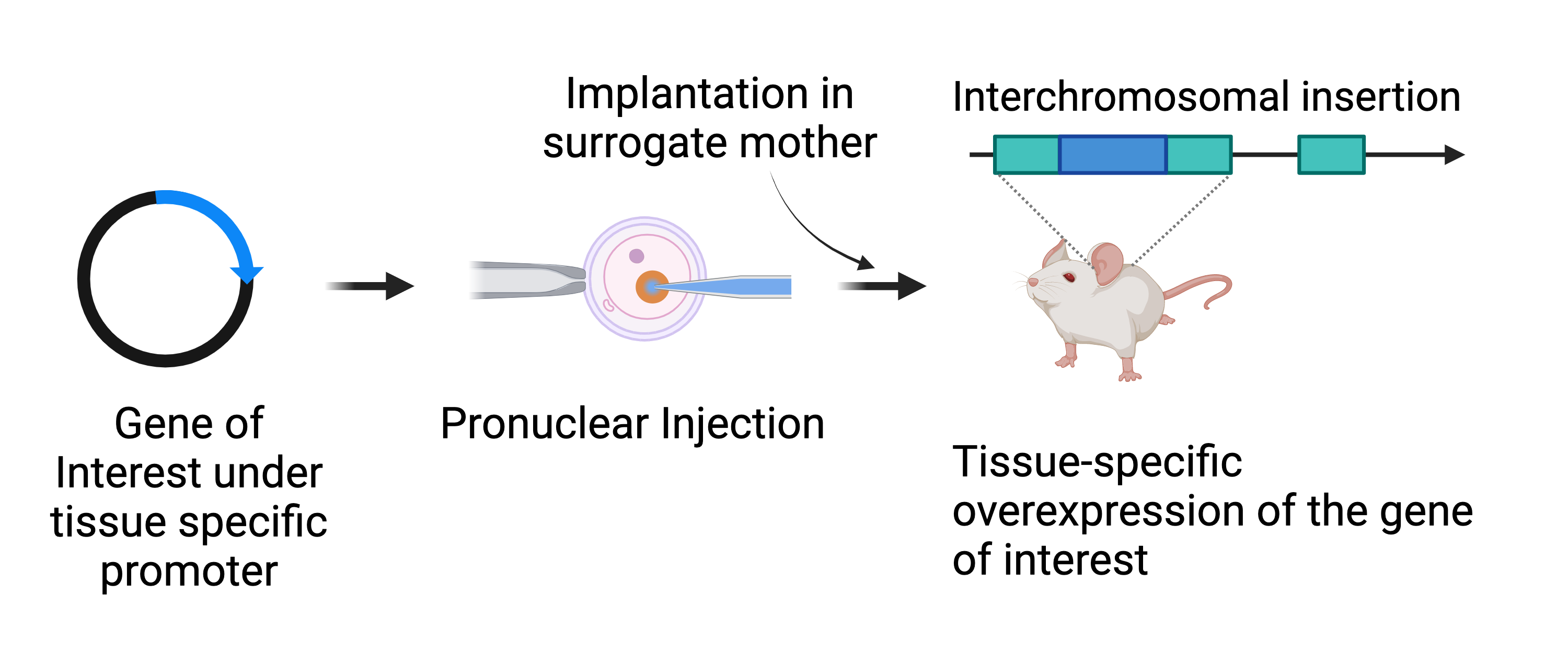
Transgenic Mice
Knock-In Mice

Gene overexpression models are transgenic mice designed to express a foreign gene. Generation of these models involves a pronuclear injection of plasmid cloned with gene (or genes) of interest driven by a strong promoter. The gene gets randomly inserted into the mouse genome and offers no control over the integration loci or the number of copies of the gene that gets inserted. The main advantage of this system is the quick model generation time. This system is traditionally used to generate mice with universal (in all the tissues) transgene expression. However, we offer tissue-specific transgene expression models. We specialize in using a tissue-specific promoter to drive the expression of the gene thus limiting the transgene expression only to the tissue of interest.
Universal Reporter Model
Universal reporter mice are widely expressed reporter gene in all of the organs and tissues throughout development. These models are versatile, powerful and useful cell source. They are used in studies of transplantation, tumorigenesis, organogenesis, chimera experiments and fluorescent imaging and technology development.
Cardiovascular Reporter Model
Cardiovascular reporter mice are harbour a reporter gene driven by a vascular-specific promoter. These models allow researchers to visualize the blood vessels and study the angiogenesis process in different tissues. They are also used in investigating vasculature development under disease conditions, eg. for wound healing, tumorigenesis and vascular morphogenesis.
Lung Reporter Model
Lung reporter mice express a reporter gene driven by a pulmonary-specific promoter. These models allow researchers to track lung cells or visualize the morphological changes in the lung. They facilitate the research in pulmonary development, function and disease.
Platelet Reporter Model
Platelet reporter mice express a reporter gene driven by a platelet/megakaryocytes-specific promoter. These models allow researchers to track platelets/megakaryocytes in blood samples, hematopoietic organs, and thrombus formation. They are used in research for wound healing, platelet biology under normal or pathologic conditions. They are also useful for anti-thrombotic investigation and validation.
